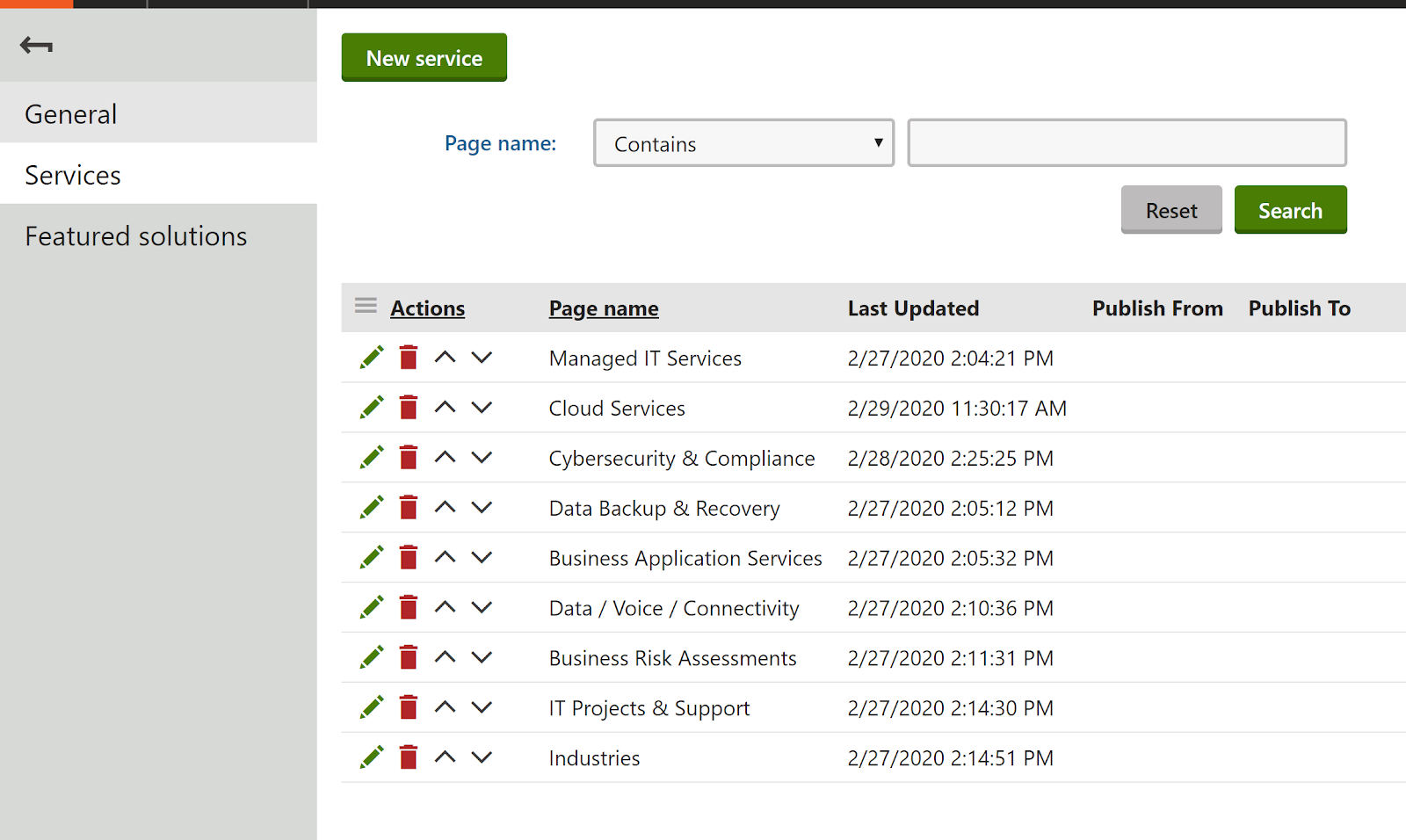Kentico multi-site solution
Kentico is a great tool that allows you to easily manage multiple sites from a single application. Sites share the same code base and database. That’s why similar content (pages, users, page templates, etc.), functionality can be shared across multiple websites and easily reused. But in the same way, each site can have unique design and branding.
There can be a lot of variants on how to use the Kentico multisite solution from a content management standpoint. The most widespread solution is absolutely different websites with some functional parts, templates/layouts, page types that can be reused on each site, common users that can edit the sites, but with different content.
The other solution is when sites have a similar tree structure, a lot of content is shared across the sites, but there is also a unique content for the site, templates/layouts for the page have unified structure, but at the same time design of each site can differ. Let’s look at the details of this solution and how we can get the flexibility and maintainability of a multi-site solution using well-known Kentico features.
Here are the main components that build a multi-site solution:
Here are the main components that build multi-site solution:
- ‘Shared Content’ site - stores all the shared content (news, articles, blog posts, etc.) that is used across multiple websites;
- ‘Site Template’ site - contains main structure that will be basis for all other websites;
- Sites themselves - initially created as a copy of ‘Site Template’, but updated with content that is only related to this site;
- Page templates/css stylesheets - define page structure and UI design;
- Custom Kentico modules - allow site pages management within the simplified interface;
When you start building a multi-site solution, you should think about content (news, articles, blog posts, etc.) that might be shared across all the sites. In order not to copy the same content pages to all sites it is better to move it to the ‘Shared Content’ site to keep shared content located and managed from a single place. In order to move appropriate content pages to a site, the Kentico linked pages become handy. Modification of linked pages causes changes to be applied to all the pages that are linked from the original page.
‘Site Template’ site defines a site with general content tree structure and base design. All other sites, created from these site templates, inherit the structure, design, and base content. Then editors of new sites are able to link existing content pages from the ‘Shared content’ site, add new or update existing pages. In more complex solutions, there can be multiple site templates with different designs. And those site templates can be built in a way that they are interchangeable, but there are some limitations.
Some clients find Kentico Pages modules difficult to manage pages and pages related content. So for sites that have a stable and simple content tree structure, a single module can be built. The module is built based on page structure and allows edit page properties like on form tabs of Pages application.
On the image below you can see how the content tree structure for Services Overview page is mapped to the module. When editing the Services Overview page in the Kentico grid, the view with three tabs is opened. On the General tab form with Services Overview page type properties are displayed. Services tab is mapped to display a list of child Services pages, that allows creating, editing, and deleting services pages. Featured solutions tab is mapped to display content under the ‘Featured Solutions CTAs’ folder in the content tree similar to the Services tab.
|
|
|
Also, another example of using a module to manage pages on site. On the image below you can see the list of testimonials available on the site. Some of them were selected and linked from the ‘Shared content’ site (like Kevin and Joe Smith) and are not editable by the local site editor. Also, editors can create new testimonials that are only site related and are unique for this site.
.png?lang=en-US)
There can be a variety of scenarios how pages management is implemented in a custom module, everything depends on customer needs. But obviously, modules give users a clear interface to manage pages and doesn’t require users to have additional knowledge of Kentico.
Except for using multiple Kentico sites in a classic manner, there might be another easy approach. Multi-site functionality can also be gained by creating subsites like subtree under the root tree node within the single Kentico website. This will allow you to access your subsites like www.exampledomain.com/site1, www.exampledomain.com/site2, etc, where site1, site2… are alises of root nodes of your subsites. Such an approach might be good if you don’t have a Kentico license for multiple domains. At the same time, all the approaches with the ‘Shared Content’ site, ‘Site Template’ site, module implementation will work in the same way. Below you can see the content tree structure, that implements multi-site solution as subfolders within a single site.
.png?lang=en-US)
And with custom modules, you can receive a simple interface, with a list of available sites, that allows you to search and access the desired site easily, as well as create new quickly.
.png?lang=en-US)
We briefly described what benefits we can get from using a multi-site solution in combination with well-known Kentico features. Here you may have a question: ’How many sites can we run in a single Kentico installation?’. We can answer you based on our experience:
- On a single Kentico installation with multiple websites it is currently running more than 1300 websites. Each site has approximately 170 pages.
- Kentico website with the subsites as tree nodes has more than 200 subsites, each has nearly 200 pages.
The numbers are impressive. So, if you are still looking for the right tool for your websites’ development, Kentico can be a perfect choice.
Author
Roman Hutnyk

.png?lang=en-US)


_1.jpg?width=270&height=270&ext=.jpg&maxsidesize=338&resizemode=force)








